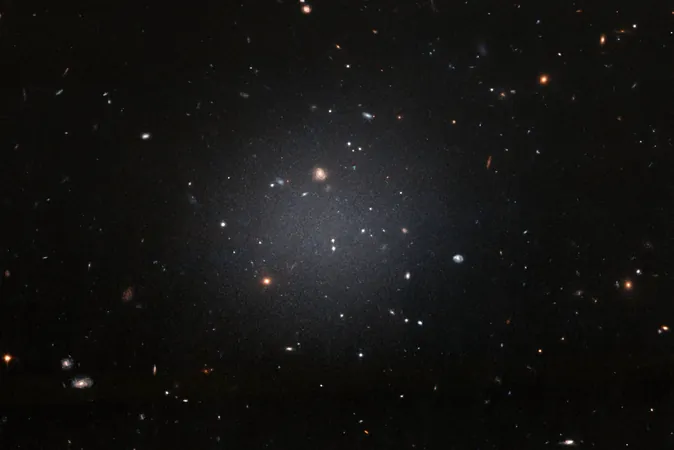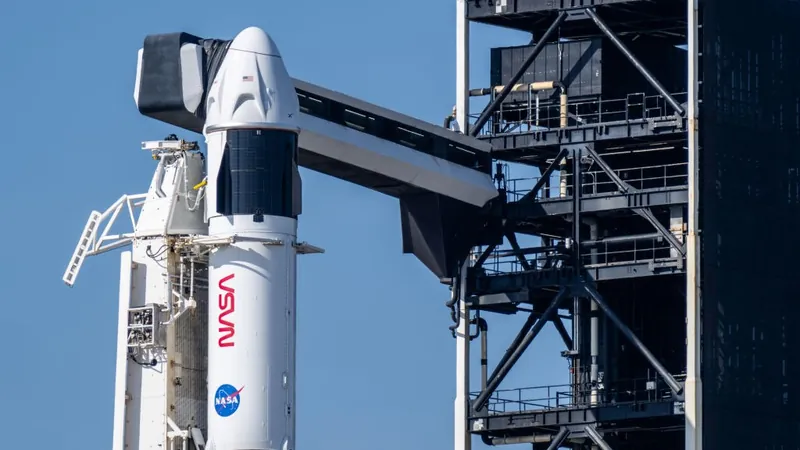
Astronomers Unveil Stunning New Ultra-Diffuse Galaxy, Reshaping Our Cosmic Understanding!
2025-01-06
Author: Charlotte
NGC 3785: A Galaxy Like No Other
At the center of this groundbreaking research is NGC 3785, distinguished by having the longest tidal tail ever identified—a stunning stretch of 1.27 million light-years. Tidal tails are elongated streams of stars and interstellar gas that emerge when two galaxies engage in a close gravitational dance—or during mergers. This dynamic interaction allows for remarkable galactic transformations that can lead to the creation of ultra-diffuse galaxies.
The discovery of this astonishing tidal tail was initiated by Omkar Bait, a committed student from the National Centre for Radio Astrophysics (NCRA) in Pune. His keen observations brought attention to NGC 3785’s extraordinary features, prompting collaboration with colleagues Yogesh Wadadekar and Sudhanshu Barway. Their teamwork has opened up new avenues for research on galaxy interactions and the complex evolution of the cosmos.
The Formation Process of the Ultra-Diffuse Galaxy
At the tip of NGC 3785's tidal tail, the astronomers have detected the nascent ultra-diffuse galaxy (UDG), known for its minimal surface brightness and diffuse layout. This galaxy’s birth appears to be heavily influenced by the gravitational pull of NGC 3785 and a neighboring galaxy. Moreover, the presence of star-forming clumps along the tidal tail provides invaluable insight into how these faint galaxies take shape.
Leading the study, Ph.D. student Chandan Watts from the Indian Institute of Astrophysics (IIA) performed extensive photometric analysis on the tidal tail using sophisticated image processing techniques. His work sheds light on the complex phenomena surrounding galaxy interactions, emphasizing the vital role tidal tails play in the emergence of ultra-diffuse galaxies.
What This Means for Future Discoveries
The discovery of an ultra-diffuse galaxy at the tail end of NGC 3785 holds immense potential for advancing astronomical research. Traditional studies often overlook these pale structures due to their low brightness. However, with the advent of innovative tools like the Euclid Space Telescope and upcoming projects such as the Rubin Observatory’s Legacy Survey of Space and Time (LSST), astronomers are poised to delve deeper into the universe’s very faint celestial features.
These cutting-edge observational instruments promise to reveal more tidal phenomena and enhance our comprehension of how galaxies form and evolve over time. The research findings have been documented in the November edition of Astronomy & Astrophysics Letters, showcasing a collaborative effort encompassing researchers from IIA and various other institutions. This remarkable discovery not only deepens our knowledge of the universe but also ignites excitement for future explorations into the fascinating mysteries of galaxy formation.
Prepare for an astronomical adventure as we continue to unlock the secrets of the cosmos!









 Brasil (PT)
Brasil (PT)
 Canada (EN)
Canada (EN)
 Chile (ES)
Chile (ES)
 Česko (CS)
Česko (CS)
 대한민국 (KO)
대한민국 (KO)
 España (ES)
España (ES)
 France (FR)
France (FR)
 Hong Kong (EN)
Hong Kong (EN)
 Italia (IT)
Italia (IT)
 日本 (JA)
日本 (JA)
 Magyarország (HU)
Magyarország (HU)
 Norge (NO)
Norge (NO)
 Polska (PL)
Polska (PL)
 Schweiz (DE)
Schweiz (DE)
 Singapore (EN)
Singapore (EN)
 Sverige (SV)
Sverige (SV)
 Suomi (FI)
Suomi (FI)
 Türkiye (TR)
Türkiye (TR)
 الإمارات العربية المتحدة (AR)
الإمارات العربية المتحدة (AR)